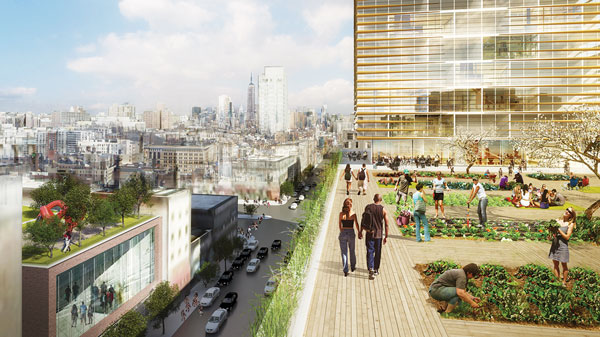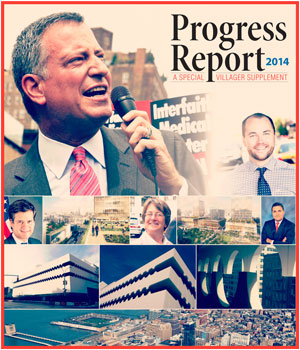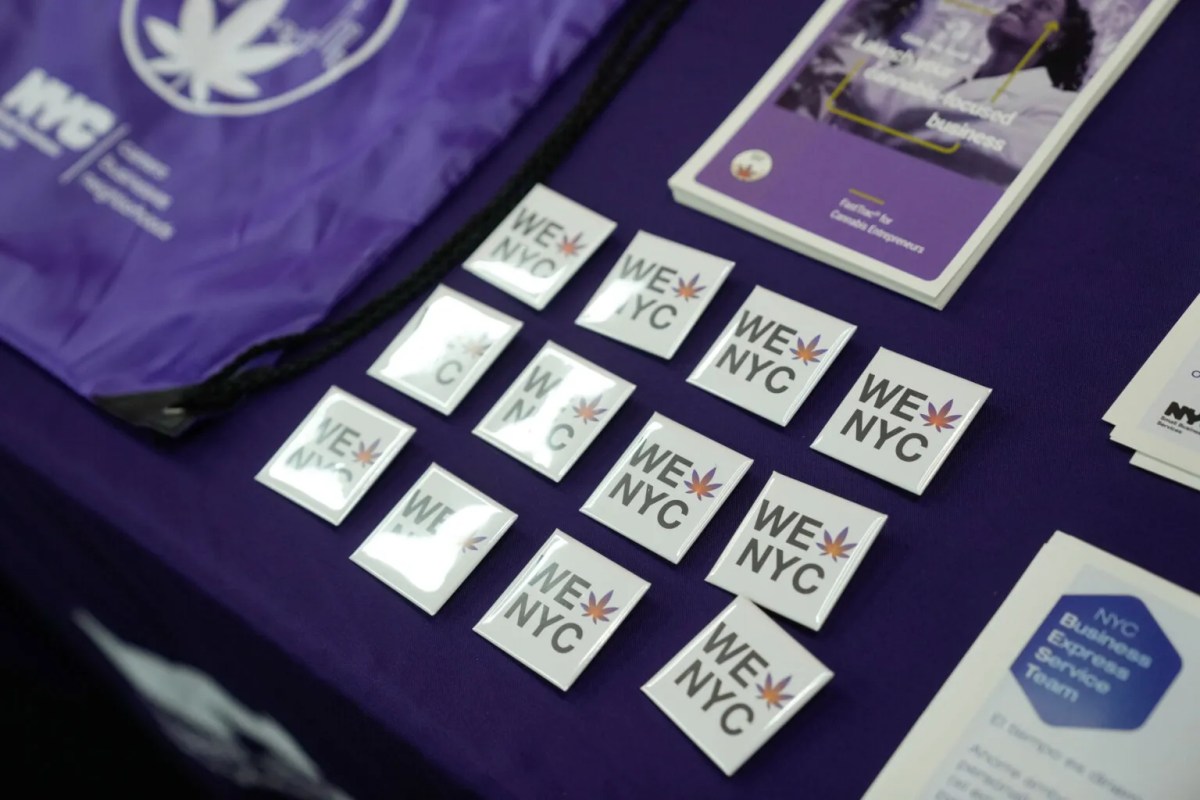
In September, after nearly 50 years of inertia at the Seward Park Urban Renewal Area, then-Mayor Bloomberg announced that developers had been selected for a $1.1 billion plan for the site’s nine remaining city-owned lots at the foot of the Williamsburg Bridge.
The developers are L+M Development Partners, BFC Partners and Taconic Investment Partners.
DEVELOPMENT
 The nine vacant lots will be transformed into a mixed-use complex of commercial space and 1,000 residential apartments. Half the residential units will be permanent affordable housing for low-, moderate- and middle-income families and senior citizens. The other half will be market rate.
The nine vacant lots will be transformed into a mixed-use complex of commercial space and 1,000 residential apartments. Half the residential units will be permanent affordable housing for low-, moderate- and middle-income families and senior citizens. The other half will be market rate.
Some highlights of the 1.65-million-square-foot development, to be called Essex Crossing, include an Andy Warhol Museum, an expanded Essex Street Market, office space, a dual-generation school run by The Educational Alliance, a rooftop urban farm, a movie theater and a bowling alley.
Designed by SHoP Architects and Beyer Blinder Belle, the project is anticipated to break ground in spring 2015 for five buildings. Essex Crossing will also be home to a future potential school, along with a hub for entrepreneurs and the technology sector.
Former SPURA residents will receive top priority when applications are processed for apartments, and can seize the opportunity to return to the neighborhood decades later if they so desire.
“In 1967, the site was demolished by government with promises of revitalization. What happened was only neglect,” Bloomberg said in September. “That promise of 1967 is now going to be fulfilled.”
Half of the affordable housing is scheduled for completion three years after ground is broken on the mega-project.
Two more buildings should be constructed by 2021, with the entire project finished by 2024.
Kyle Kimball, president of the city’s Economic Development Corporation, said the project — notably, its small office spaces — would improve on the neighborhood’s historic strengths.
“The 250-square-foot office spaces for creativity and technology will nurture the next generation of entrepreneurs on the Lower East Side,” he said. Smaller spaces will also help to keep the commercial use more affordable.
Charles Bendit, co-C.E.O. of Taconic Investment Partners, said, “Essex Crossing will transform New York City into an incubator for economic growth.”
Bloomberg applauded City Councilmember Margaret Chin for helping shape Essex Crossing.
“This is such a historic day,” Chin said at the press conference last fall. “People put aside their differences,” she added, referring to how a divided community was finally able to reach consensus on guidelines for the plan.
The councilmember mentioned that people were critical of her for not securing 100 percent affordable housing at SPURA, but she acknowledged that 50 percent affordable housing was pretty good.
When asked if Essex Crossing could be reversed by the next mayor, Bloomberg indicated no.
“We’ve signed contracts,” he said. “It’s a done deal.”


















